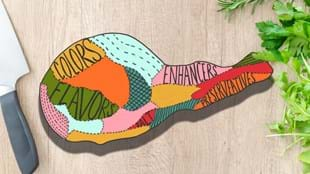It’s a global trend, the desire to cut back on animal products. A combination of health, animal rights and environmental concerns has seen demand for vegan and vegetarian alternatives in meals, recipes and ingredients significantly increase in recent years.
And there are plenty of benefits to eating less meat. Plant-based diets are a feature of the world’s healthiest populations; we are better off in terms of disease risk reduction and health benefits if we treat meat as a garnish rather than the main focus of a meal.
The trend towards less meat is also driving the growth of alternative protein; products that are designed to replicate the taste and texture of meat, whether it’s a juicy burger patty or a piece of chicken, but don’t come from animals. Food manufacturers are coming to the party and producing a range of options, from old-school soy-based products to the new-age, high-tech options.
In the United States, the Impossible Burger – a meaty-looking, plant-based burger – has attracted a lot of attention as well as huge investment from people like Bill Gates. New Zealand-based Sunfed Meats produces “Chicken Free Chicken” made from pea protein, which has been a hit.
At the next frontier, scientists are busy working on cultured “meat” in laboratories, without using animals. We’re a little way from this being commercially available, and there are big question marks over whether people would accept lab-grown meat as a viable option. But there’s no doubt we will see this technology develop.
So: are meat-free meats actually healthier for us?
It really depends on which ones you choose, and how you eat them. These foods can be a useful addition to a healthy diet. But there are some things to watch out for if you’re eating meat-free meat regularly.
Iron claims, for example: lean beef contains around 2mg of iron per 100 grams. Some alternatives can contain as much or more. But the iron in meat is different from the iron in plants. The “haem iron” (also known as heme iron, derived from Greek haima meaning blood) in meat is more easily absorbed, compared to the non-haem iron in plants, of which we typically absorb less than 10 percent. It’s not quite comparing like with like.
We need to eat a lot more of a food containing non-haem iron to get the same amount of iron we’d get from a food containing haem iron. It’s why vegetarians can be vulnerable to running low on iron. So don’t rely on meat-free meat for all your iron needs. If you’re vegan or vegetarian, take advice from a doctor or qualified dietician and get your iron levels monitored.
The other thing to note about faux meats is that they are essentially processed foods. Where meat is a whole food and has one ingredient, even the least processed of the meat substitutes are, by necessity, produced in a factory and have multiple ingredients.
That means they can contain other additives such as flavors, preservatives, flavor enhancers and colors, which are necessary to mimic the flavor and texture of meat. The additive of most concern is salt, almost always added to meat-free meat. The sodium in salt is an issue for many of us; our modern diets are high in processed food which tends to be high in sodium. That means we can easily take in a lot more sodium than is healthy. Consuming too much sodium puts us at risk of high blood pressure and increases our risk of stroke.
If meat-free meat appeals to you, when you’re looking at labels, check the sodium in particular and choose the lowest-sodium options you can find. If salt features highly on the ingredients list, chances are the product is higher in sodium, so eat it moderately.
Meat-free meat products are a useful and convenient option when introducing yourself or the family to a healthier diet, but it’s worth remembering we can also eat less meat by enjoying naturally meat-free meals.
There’s a whole world of delicious, whole food meat-free meals out there – such as those enjoyed by the world’s healthiest people – which are tastier and healthier than something made with a meat facsimile. Think of the many delicious dhals of India; or the bean, chickpea and lentil dishes to be found in Italian cuisine. We can think of a plant-based diet as celebrating plants, rather than replicating meat. If we’re really keen on being healthier, this is the way of the future.

Niki Bezzant is a New Zealand-based food writer, editor and commentator. She is the founding editor (now editor-at-large) of Healthy Food Guide magazine, and is currently president of Food Writers New Zealand and a proud ambassador for the Garden to Table program which helps children learn how to grow, cook and share food. She is a member of the Council of Directors for the True Health Initiative, a global coalition of health professionals dedicated to sharing a science-based message of what we know for sure about lifestyle and health.
Follow the freshest thinking @fitplanetmag.








